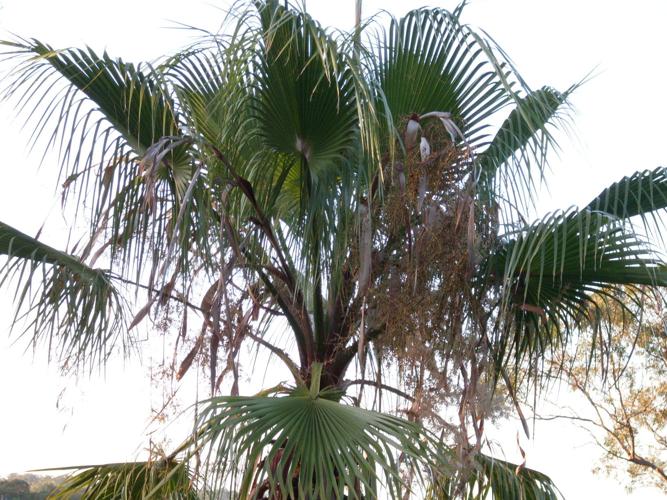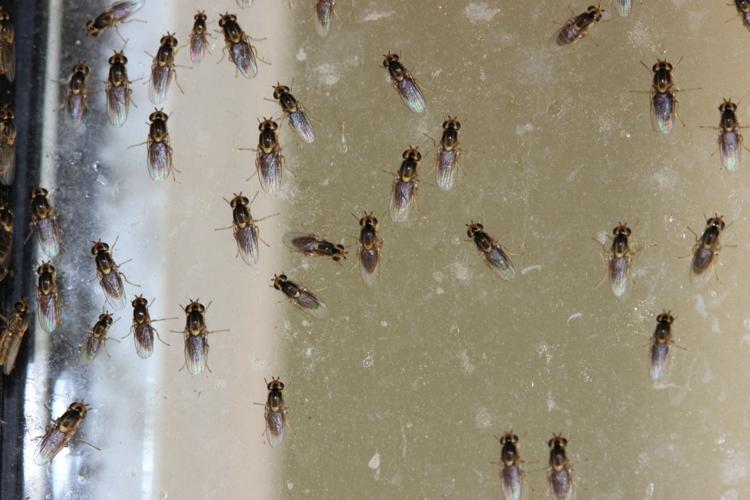Q: I have an orange tree that is 9 years old. The oranges look OK and are being watered by a sprinkling system. I also had the tree pruned this year and am getting more growth. They are starting to turn orange in color, but I noticed some oranges had already changed to the color orange or partially orange. Those are the ones I had to pick off the tree because they were all split in the middle with an orange on either side, except for one that was black (inside) on one side. I want to know what is causing the oranges to split in half. I do occasionally give them some extra water (especially in the summer) with a hose for about 20 minutes or so. Is there anything I can do to keep from losing all my oranges?
A: Split fruit can be caused by a variety of stressful conditions for an orange tree, including extreme fluctuations in temperature, humidity, soil moisture and fertilization. The rind splits when water and sugars are transported from the roots to the fruit and the rind is unable to expand quickly enough. If you are watering and fertilizing properly and otherwise taking good care of the tree, it is less likely you will have problems. The factors we have the most control over are fertilization and soil moisture so it is important to provide fertilizer at the right time of year and deep irrigation rather than just watering on the surface. I am afraid your sprinkler and hose method is not enough for your tree. I recommend you check to make sure your irrigation schedule is providing water down to 36 inches below ground. You can check this with a soil probe. It is best to install a drip irrigation system around the outside of the tree canopy and operating on a schedule that provides water 36 inches deep every seven to 10 days in the summer, every 10 to 21 days in the spring and fall, and every 14 to 21 days in the winter.
Q: We bought a blue Mexican fan palm at a local nursery four years ago in a 15 gallon container, it was fairly large — read expensive — and looked healthy. I was careful to dig a large planting hole and careful removing the plant from the containers. I put it on our drip. Today, four hours once a week with a two gallon emitter inserted in a 12-inch watering spike. So the water dispenses at the roots not the surface. It has continued to put on new fronds. However, for every new one that opens an old one withers. After four years, the plant is no bigger than the day we bought it. Fortunately, no smaller. But we’d had hoped it would become a substantial palm.
A: The Mexican fan palm (Washingtonia robusta) is well suited for our Arizona heat and is typically a fast grower. Most trees really take off in their third year after planting so you should have seen some significant growth in the past year at least. The possible issues that would prevent fast growth are insufficient water, fertilizer, and poor soil. We recommend watering every five to 10 days in the summer to a depth of 36 inches. In the spring and fall, water every seven to 10 days and in the winter, every 14 to 21 days. Drip emitters should be placed in a circular fashion around the trunk to distribute the water evenly to the roots. You can apply a slow release fertilizer around the root zone once each year. Planting holes should be twice as wide as the diameter of the container and deep enough that the root-shoot interface is about one inch below the surface of the soil. Since you didn’t specify, I wonder if the tree was planted at an appropriate depth.
Q: I would like to know the species and life habits of the tiny, submillimeter-length insects that hover around your face and unceasingly try to get into your ears and nostrils. They emit a high-pitched hum close up. In all creation, there is no more annoying animal. Can anything be done to discourage them?
A: You are likely seeing one or more species of flies. Determining which species would be difficult without examining them under a microscope. There are about 290 species in North America. The ones that try to get into your eyes, nose, and ears go by a variety of common names including grass flies, stem-miner flies, eye gnats, and pecker gnats. They are attracted to moist locations so the eyes are a common target and can be vectors of pink eye so it’s good to wash them out if you get them in your eyes. These flies typically breed in areas where there is food and moisture. For some, their food is grass species, some others are scavengers of animal products, and a few feed on insects. In my experience, we see a spike in their populations of flying adults during and immediately after the summer monsoon season. Discouraging them is best accomplished the same way we discourage their relatives, the mosquitoes. Reduce places that have standing water after a rain so they are less likely to breed nearby. There are insecticides that work but they only kill on contact and there are probably billions of flies active at one time so you might kill a few and then the survivors move in to reclaim the space. This is yet another group of insects that reminds us that we are only sharing space with this enormous, diverse, and highly successful class of animals that predates us by close to 350 million years and will likely still be in charge when we are long gone.





